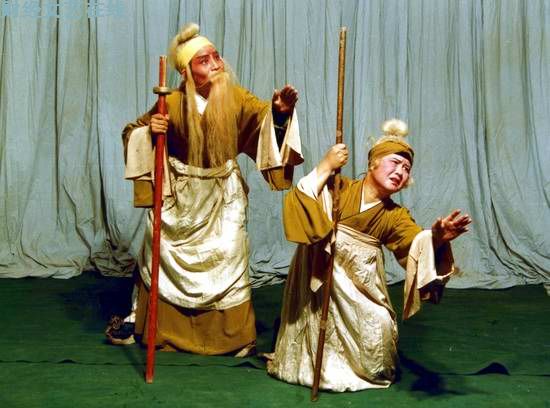Lofty Lushan Mountain
Temples in Hidden Places
On the First of August
Wheels by the Water
Share your travel story with regional@chinadaily.com.cn
Yiyang Tune
( chinaculture.org )
Updated: 2011-09-13
III. Influence on other tunes
After the mid-Ming Dynasty, the Yiyang tune was introduced to Beijing, Nanjing city, Jiangsu province, Anhui, Zhejiang, Hunan, Guizhou and Yunnan provinces and Guangxi Zhuang Autonomous Region. Combined with local dialects and folk songs, it quickly gave birth to many new local operas, such as the Jiangxi province Leping tune, the Anhui province Huizhou tune, the Qingyang tune (also called "Chizhou tune"), and the Beijing Jing tune.
At the end of the Ming Dynasty, the Qingyang tune improved the gun diao performance style created by the Yiyang tune, where spoken words of equal length are added after the long or short aria, thus boosting the development of the high-pitched opera system. The high-pitched operas then spread to Hubei, Sichuan, Henan, Shanxi andShandong provinces, and were collectively called "qing xi" ("pure opera").
At present, high-pitched operas mainly include Sichuan Opera, Hunan Opera, Chenhe Opera and Ganju Opera, which have inherited such characteristics of the Yiyang tune as beating time with a drum, featuring one singer with others joining in, and adding spoken words between two arias. Some operas also use wind and stringed instruments.
 |
| Coming across the Son in the Pavilion |
IV. Current situation
Compared to the Kunshan tune, which has been placed under systematic protection, the survival of the Yiyang tune is currently being threatened. Due to the passage of time and changes in people's aesthetic tastes, the Yiyang tune has gradually declined.
First of all, fewer and fewer people are paying attention to the Yiyang tune, and its remaining artists, who have graduated in the 1950s, are all around 60 years of age. Currently, only five to six old artists can still master the opera.
Due to funding shortages, the collection and arrangement of related materials have been put on the back shelf. And no troupes or venues currently exist to stage public performances. Some experts warn that this ancient art form is on the verge of extinction; they say it will die out in 20 years unless new blood is trained.




